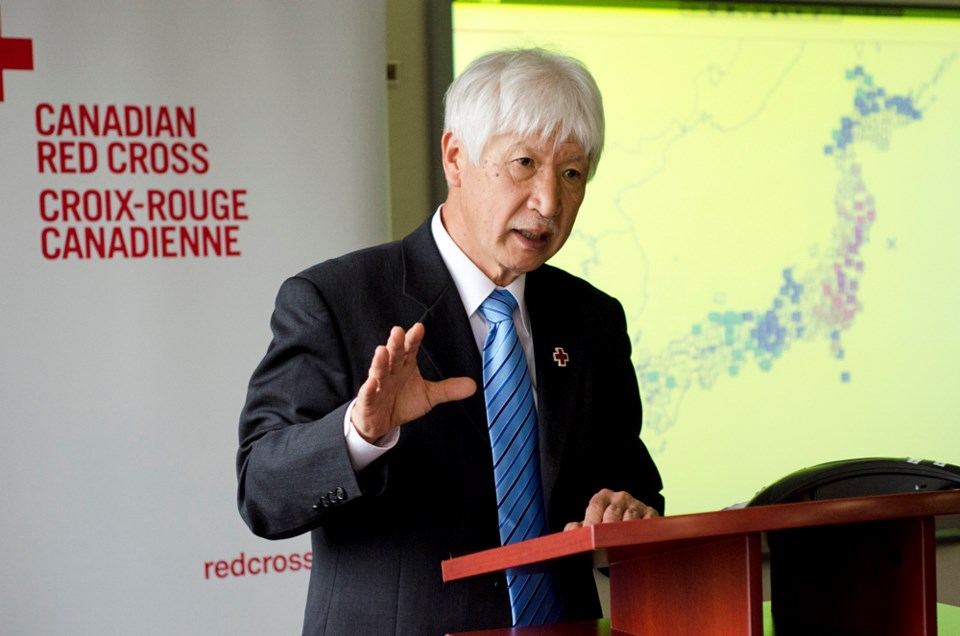A Japanese Red Cross official was in Burnaby Friday to mark the fifth anniversary of the massive earthquake and tsunami that hit Japan in 2011 and to warn Canadians to learn from his country’s experience.
“We received so much support, donations; $48 million came from the Canadian Red Cross,” Naoki Kokawa, deputy director general of the Japanese Red Cross's international department, told the NOW. “How we can return this is only by saying, ‘This is what happened in Japan. You should prepare yourself also for such a major disaster.’”
The 9.0 magnitude quake, which triggered a devastating tsunami and meltdowns at the Fukushima Daiichi Nuclear Power Plant, killed nearly 1,600 people and displaced 470,000.
More than 2,500 are still missing.
Kokawa said his country had been warned of the possibility of an earthquake of that magnitude. He was at home with his wife in Tokyo when the shaking started.
“When the disaster hit, I thought, ‘This is it,’” he said.
On a four-day trip to Canada to mark the five-year anniversary of the mega-disaster, Kokawa stopped by the Red Cross’s B.C. Lower Mainland office in Burnaby to brief the organization’s B.C. disaster management team on what their Japanese counterparts learned from the 2011 quake and tsunami.
Scientists have long warned a mega-earthquake could hit the B.C. coast in the next 50 years, when pressure built up between the Juan de Fuca and North American tectonic plates for the last 300 years suddenly releases.
But Kokawa, who has worked on major recovery programs like the Myanmar cyclone, Sichuan earthquake and the Haiti and Chile earthquakes, said that doesn’t mean Canadians will heed the warnings coming from his country’s experience.
“It’s not easy, and I sometimes may conclude it’s impossible to learn from somebody else’s experience, but if I say that, it’s end of story,” he said.
One thing that gets in the way of adequate disaster preparedness is balancing immediate needs against a catastrophic event that might be years away, said the Red Cross’s B.C. and Yukon vice president Kimberley Nemrava.
“We highly promote making sure your family is ready for 72 hours or even longer,” said Nemrava, “but you have families that are living near the poverty line and they may be making choices between putting food on the table now or paying their rent and having a stash of food for later. Even at the most basic level, that’s what people are facing.”
If the “big one” struck the B.C. coast, the Red Cross would support government humanitarian services, according to Nemrava, who said there are 500 Red Cross disaster management volunteers across B.C. and more than 250 in the Lower Mainland.
“Red Cross trains for disasters and we certainly have trained personnel, but when you’re talking about a mega disaster, by its very definition it will overwhelm resources, and so we’d be calling on all levels of sources from the international movement to help us out,” she said.
Besides having a 72-hour emergency preparedness kit, Nemrava says households can prepare for a major disaster by taking a basic first aid course and getting to know their neighbours.
“If you have a strong community, if you have a strong street, if you know your neighbours, it means you going to be stronger after a disaster,” she said. “Things that you do together, that will strengthen your ability to communicate after a disaster because that’s your immediate response system.”



